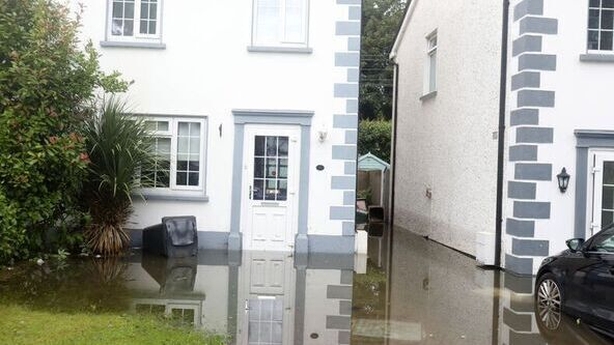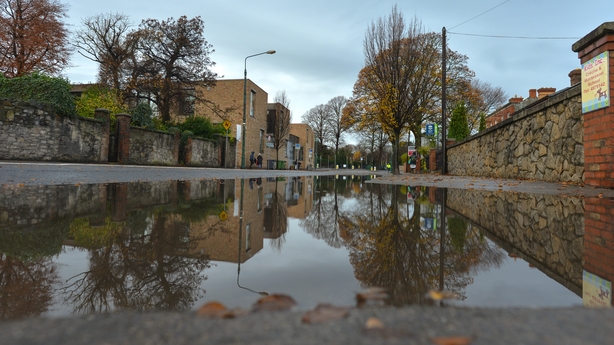Flooding has long been an issue in Dublin, but climate change is bringing increased risk.
More and bigger floods are predicted as the major climate impact for all of Ireland.
River and coastal flooding are well established and well-studied risks for the capital.
Now pluvial flooding, caused by extreme rainfall events, are a new hazard.
In June last year 12mm or almost half an inch of rain fell in Crumlin, in the south of the city, in just five minutes, causing spot flooding.
However, these events can be very localised and may not be recorded by established rain gauge networks.
A team of scientists in University College Dublin is giving out weather stations to householders to gather more data on rainfall patterns across the city and county.
The team also hopes to raise awareness about the importance of green spaces and gardens for absorbing rainwater and preventing floods.
Dr Payam Sajadi is leading the Restoration Project, funded by Science Foundation Ireland.
"We know that Dublin is developing very fast, as a result of this development we are losing green spaces - permeable surfaces within two years have been transformed into impermeable surfaces, by approximately 5%," he said.
"Homeowners are not aware of the importance of their gardens"
Dr Sajadi's team has given out 40 weather stations to households across Dublin and hopes to give out more.
The stations record rainfall, air temperature and pressure and wind speed and direction at five minute intervals.
The data collected will add to the information recorded by Met Éireann and the local authorities.
Dr Sajadi says weather events can see great local variation.
"This will help us to understand what is going to happen in future with rainfall patterns, flooding, predicting the floods in the city," he said.
Dr Sajadi says the project is also helping to inform the citizen scientists who take part.
"Homeowners are not aware of the importance of their gardens," he said. "They don’t know how much the garden can play a vital role holding water."

'Our garden used to flood - through gravel and green areas we've prevent it happening'
Ciara Finn, who lives in Stillorgan, has installed a weather station from the Restoration Project in her garden.
"It is interesting to see, when it is a bit of a stormy day outside, you can go straight to the base station and see how much rain is falling and it can be quite surprising," Ms Finn said.
"You might think it’s only a small shower, or large shower but it collects it pretty accurately."
Even before getting the rain gauge Ms Finn’s family were aware of how much difference permeability makes.
"Our garden did used to flood, so through gravel and green areas, we have prevented it happening again to allowing the absorption in," she said.
Dublin City Council is all too aware of how climate change is bringing new risks. Padraig Doyle is a Senior Engineer with the local authority.
"We’re starting to see the effects already, in terms of more intense rainfall and possibly much bigger events coming our way," Mr Doyle said.

Pipes from Victorian times
The city’s infrastructure was not designed for extreme rainfall.
"That water from those events, is going into gullies and straight into our pipe system," he said.
"Those pipes in many cases could be back to the Victorian era, so they simply don’t have the capacity to cope with the amount of rain they’re now getting."
Mr Doyle said it simply would not be possible to upgrade the system to cope with every event.
The only solution is to prevent some of the water getting into the drains.
People covering over parts of their gardens with hard impermeable surfaces is an issue.
"We’re quite sure people are not doing this out of any malicious intent, I don’t think they know they’re causing a problem," Mr Doyle said.
"They just want to have an extra car parking space or have less maintenance."
He said the council is asking people to think about flooding if they are changing their gardens.
"You can get porous paving bricks, which are basically bricks that look the same as a standard brick finish but have a small gap between them to allow water through or what a lot of people will do now is put down some gravel," Mr Doyle said.
The Restoration project team in UCD is hoping more citizen scientists will come forward to install weather stations and that the data gathered will inform both individuals and local authorities on how to help flood prevention.







